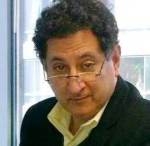Updated
Morocco’s Moves to Improve Economy Are Paying Off – Jean R. AbiNader
Country Continues to Improve Growth Results
Jean R. AbiNader, MATIC
March 24, 2016
Although the overall economic news in North Africa is mixed, due to the impact of the decline in oil prices and a lackluster rainy season, Morocco’s economic diversification priorities are enabling it to balance out the negatives with continued growth and development.
One sign of the economy’s health is that, as Reuters reports, “Morocco’s central bank cut its benchmark interest rate on Tuesday to 2.25 percent from 2.5 percent, loosening monetary policy for the first time in more than a year to boost growth hit by one of the worst droughts in the past decade.” The outsized impact of the agricultural sector on the economy affects both the country’s gross domestic product, revised downward from 2.1 to 1%, and gainful employment, as fully 40% of the workforce is engaged in the agricultural sector.
On the other hand, since Morocco imports more than 90% of its energy needs, its economy is benefitting from the drop in energy prices by reducing deficits, supporting cutbacks of energy subsidies, and enabling policy makers to consider a broader range of options in promoting growth. This good news is supplemented, of course, by the continued growth in the renewable energy sector, which will further drive down oil and gas imports and contribute to increased foreign reserves through export sales to neighboring countries
“We don’t have any concerns regarding inflationary pressures … So we can give some support to the economic activity,” Central Bank Governor Abdellatif Jouahri told reporters. The bank last cut rates in December 2014. In line with IMF recommendations, additional structural reforms are being implemented, including a more flexible exchange rate, reducing the euro’s weighting in the currency basket, and more emphasis on targeting inflation.
According to the article, “Morocco has already done more than most North African countries to make painful changes required by international lenders to curb its deficit, such as ending fuel subsidies and freezing public sector hiring. The government still controls the prices of wheat, sugar and cooking gas.”
Banking and Auto Manufacturing Sectors Drives Harder into Africa
In an FT article, Finance Minister Mohamed Boussaid spoke about the changes in the financial sector that are boosting growth. He noted that Moroccan banks are in 22 African countries, and about 17% of their activities are in Africa. “Europe will always remain a primary partner for Morocco, but Africa is now seen as the future in terms of growth and economic potential.”
Hassan el-Basri, head of risk at Banque Centrale Populaire (BCP), which has large holdings in seven sub-Saharan countries, says their impetus is that “These countries represent a real growth potential given the level of banking penetration, which remains one of the weakest in the world.”
The banking sector is dominated by BCP, Attijariwafa Bank (AWB), and Banque Marocaine du Commerce Exterieur (BMCE), which together hold 65% of the country’s banking assets. While this may be dangerous in some countries, the article noted that “most acknowledge that strong regulation by the central bank has so far contained this risk.”
Risk will be further mitigated with new players entering the financial sector as there are opportunities beyond the large company portfolios held by the Big 3. Minister Boussaid indicated as much, saying that “We are concerned by financing, especially of SMEs, which do not have enough capital.” By addressing their needs and with new mid-sized players in the sector serving the middle class, financial services will become even stronger.
The success of automobile manufacturing is another star in Morocco’s African economic strategy. As reported by the FT, it is now, along with aeronautics manufacturing, the largest contributor to the country’s GDP. The Renault factory in Tanger produced 229,000 cars in 2015 and is the largest car factory in Africa. Jean-Francois Gal, director of the factory, notes that “We are in a perfect location at the gates of Europe,” and the bulk of its output is shipped to markets in France, Spain, and Germany.
The plant has created more than 7000 jobs and attracted some 150 supply-chain manufacturers that supply Renault and export to Europe and other markets. This extensive network attracted Peugeot Citroen to invest in a plant in Kenitra, on the Atlantic Coast north of the capital Rabat, with an initial capacity of 90,000 vehicles, mainly for the African market.
The goal for the sector, according to Hakim Abdelmoumen, president of the Moroccan Association for Automotive Industry and Trade, is 90,000 jobs by 2020, in addition to the 100,000 that already exist. This rapid expansion of the industry is having an important side benefit – attracting expatriate Moroccans with managerial and technical experience to return from overseas and lend their talents to this important sector.
In diversifying its economic base, moving up the value chain to industrial manufacturing, and developing agricultural strategies that encourage better use of technology, irrigation, seed selection, and production and marketing, Morocco continues to build positive economic indicators that facilitate growth and competitive strength.
